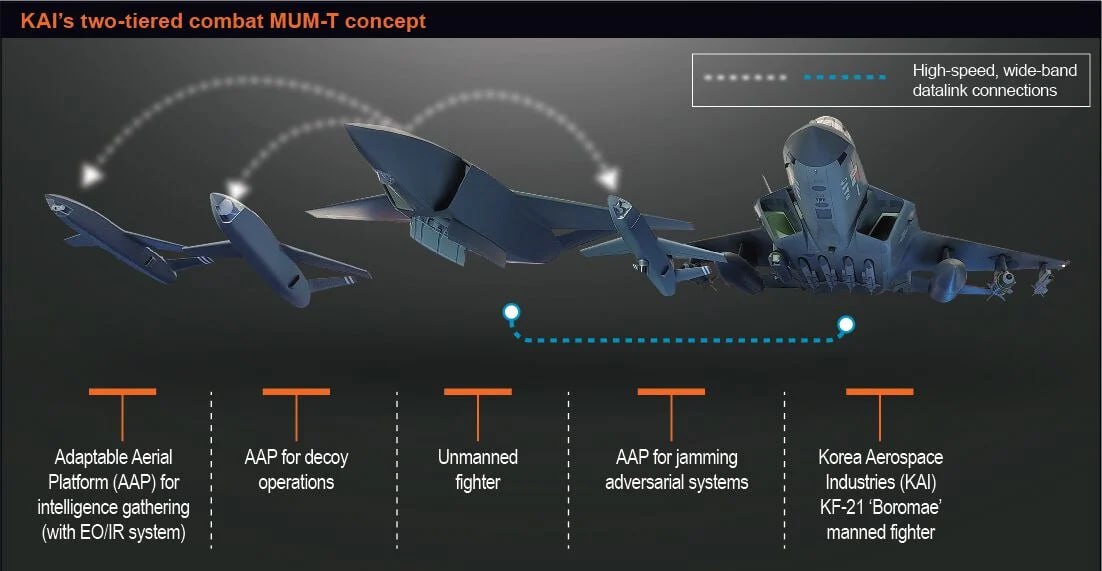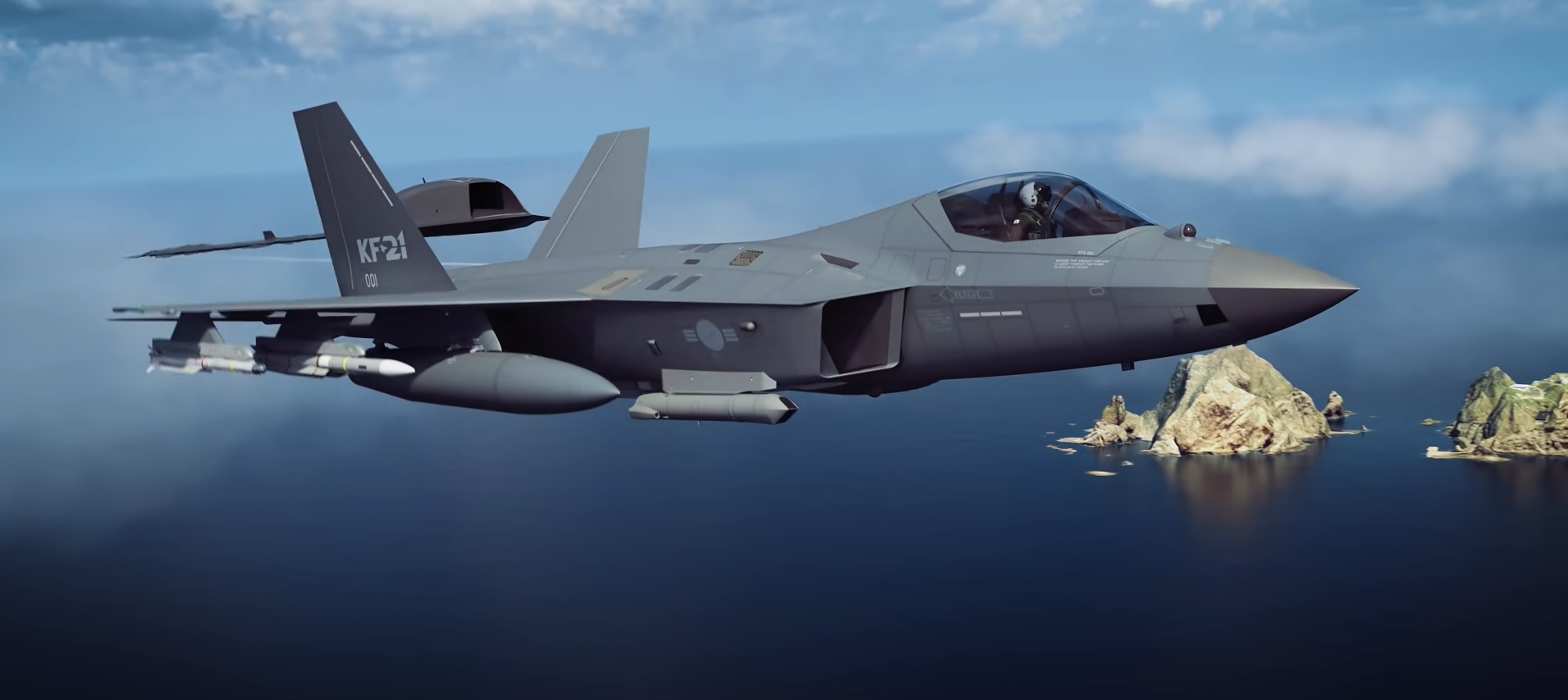South Korea’s first homegrown stealth fighter, the Korea Aerospace Industries (KAI) KF-21 Boramae, has been envisaged with another loyal wingman project, carrying other drones in what appears to be an extended manned-unmanned teaming (MUM-T) concept.
A computer-generated illustrated image shows the KF-21 linked to a large unmanned fighter, with the latter connected to smaller drones used for electronic intelligence (ELINT), Electronic Warfare (EW), optical reconnaissance, and anti-radar purposes.
The image went around on several social media pages on Sina Weibo that discuss Chinese and Asian military affairs. The Boramae has made rapid success over the last few months but still has a long way to go in terms of completing eighty-five percent of its 2,000 test flights before prototypes are selected for series production.
However, according to an October 25 report on Aviation Week, the number of test sorties will accelerate with all six prototypes available after finishing manufacturing.
Wingman With Wingmen Drones
The image is titled KAI’s “two-tiered combat MUM-T concept,” with all the wingmen and the drones led by the KF-21. The prominent unmanned fighter is portrayed as being linked to the Boramae. It itself is networked with three other smaller drones that it appears to be able to carry inside an internal bay with retractable doors.

The drone on the wingman’s right wing is an “adaptable aerial platform (AAP) for intelligence gathering with electro-optical/infrared (EO/IR) system.” The drone beside that is an “AAP for decoy operations,” while the one beside the wingman’s left wing is an “AAP for jamming adversarial systems.”
All the systems are linked with “high-speed wide-band data link connections.” The Boramae itself is shown carrying a full loadout in non-low observability mode, with external fuel tanks, an air-to-ground missile (AGM), and an air-to-air missile (AAM) on each of the wing pylons and what appear to be four long-range AAMs on concaved launchers on the underbelly. It also has a targeting pod on the right engine intake.
‘Drones Are To Protect The Wingman’
It is unclear if this MUM-T concept by KAI is meant for other aircraft or only for the Boramae. But it cannot be successful without the Boramae either, since it is the only aircraft in the South Korean inventory that allows for the technical modifications and alterations required to integrate the wingmen, as the systems are entirely made within the country.
Janes reported that this concept was revealed during the International Aerospace and Defense Exhibition (ADEX) 2023 in Seoul, held from October 17 to 22. The idea behind pairing three to four AAPs with each unmanned fighter is to reduce risk to manned and unmanned fighters (loyal wingmen) within the friendly formation.
“As the unmanned fighter will also be an expensive platform, we seek to minimize risk by adding AAPs to conduct operations over hazardous battle areas,” Janes quoted KAI officials. This translates into an arrangement where the AAPs will be placed ahead of the unmanned fighter when the formation operates in high-risk areas.

It is, however, unclear if the smaller drones can be controlled by the larger KF-21 Boramae, too, if the leading wingman drone is lost. But such an elementary redundancy cannot be certainly ignored by the developers.
Besides protecting the primary wingman drone, the smaller AAPs can also perform the same function for the fighter, drawing enemy fire, photographing ground installations, and jamming ground-based air defense (AD) radars in Suppression/Destruction of Enemy Air Defense (SEAD/DEAD) missions.
KF-21 Boramae Has Another Wingman Program
However, this Air-Launched Effects (ALE) program by KAI differs from the original ‘Loyal Wingman’ program unveiled in May 2023. This project was first revealed in a photo of a flying wing/fused wing body-shaped UAV inside a factory. Engineers surrounding the airframe suggested it was the prototype.
A South China Morning Post (SCMP) report from August 2022 about KAI’s loyal wingman project quoted Shin Jong-woo, a defense analyst at the Korea Defence Forum. “It’s another matter to develop highly sophisticated manned-unmanned teaming systems that will employ top-of-the-line artificial intelligence and extremely complicated software that will take a lot of time and effort. It’s anyone’s guess when South Korea can develop such a system.”
The technical challenges involve developing wireless communication, data links, and highly intricate algorithms that allow wingmen drones to fly and undertake essential functions autonomously while remaining slaved to the main fighter.
- The author can be reached at satamp@gmail.com
- Follow EurAsian Times on Google News




